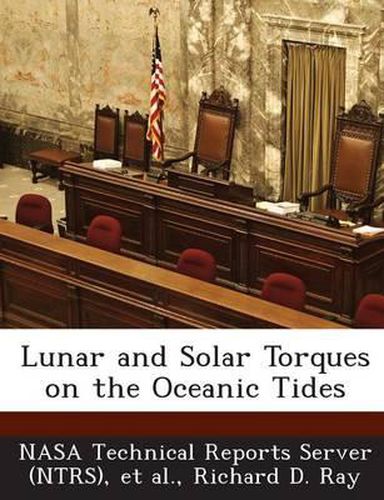Readings Newsletter
Become a Readings Member to make your shopping experience even easier.
Sign in or sign up for free!
You’re not far away from qualifying for FREE standard shipping within Australia
You’ve qualified for FREE standard shipping within Australia
The cart is loading…






A general framework for calculating lunar and solar torques on the oceanic tides is developed in terms of harmonic constituents. Axial torques and their associated angular momentum and earth-rotation variations are deduced from recent satellite-altimeter and satellite-tracking tide solutions. Torques on the prograde components of the tide produce the familiar secular braking of the rotation rate. The estimated secular acceleration is approximately -1300 sec/century(sup 2) (less 4% after including atmospheric tides); the implied rate of change in the length of day is 2.28 milliseconds/century. Torques on the retrograde components of the tide produce periodic rotation variations at twice the tidal frequency. Interaction torques, e.g. solar torques on lunar tides, generate a large suite of rotation-rate variations at sums and differences of the original tidal frequencies. These are estimated for periods from 18.6 years to quarter-diurnal. At subdaily periods the angular momentum variations are 5 to 6 orders of magnitude smaller than the variations caused by ocean tidal currents.
$9.00 standard shipping within Australia
FREE standard shipping within Australia for orders over $100.00
Express & International shipping calculated at checkout
A general framework for calculating lunar and solar torques on the oceanic tides is developed in terms of harmonic constituents. Axial torques and their associated angular momentum and earth-rotation variations are deduced from recent satellite-altimeter and satellite-tracking tide solutions. Torques on the prograde components of the tide produce the familiar secular braking of the rotation rate. The estimated secular acceleration is approximately -1300 sec/century(sup 2) (less 4% after including atmospheric tides); the implied rate of change in the length of day is 2.28 milliseconds/century. Torques on the retrograde components of the tide produce periodic rotation variations at twice the tidal frequency. Interaction torques, e.g. solar torques on lunar tides, generate a large suite of rotation-rate variations at sums and differences of the original tidal frequencies. These are estimated for periods from 18.6 years to quarter-diurnal. At subdaily periods the angular momentum variations are 5 to 6 orders of magnitude smaller than the variations caused by ocean tidal currents.